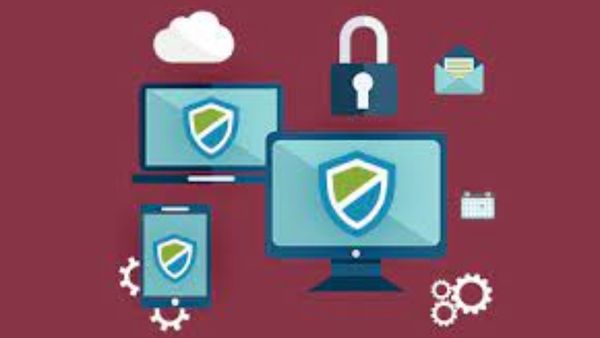Advantages of PDF DRM vs PDF password protection

PDF DRM solutions have many advantages over PDF password protection, providing not only greater protection and ease of use, but additional document control over how your documents can be used. Some of the advantages of using DRM to protect PDF files include:
1. Reduced threats. Efficient reader protection, should the reader not care for your legal information, includes tracking signatures and encryption. That is, a number is generated and checked against a list of known readers. Should the reader try to view a PDF, the appropriate authorization (whether it be by a signature or by a hash value) is sent back to you. This prevents third parties from viewing and/or sharing the document.
2. Containers and attribution. PDF DRM solutions are capable of distinguishing between various objects and containers, and the viewer or reader can only view certain sections of the document. This eliminates a number of situations such as unauthorized copying and sharing, or confidential information ending up in the hands of the wrong party.
3. Conversion to other formats. PDFs are very portable and can be easily converted to other formats, such as ODT and DOC, which can be accepted by readers. Most DRM-protected PDFs will be rendered unreadable should the reader change formats without getting your permission.
4. Confidentiality. If your PDF document contains your confidential information, you may be allowed access to that information, but only with the proper authorization. PDF DRM systems that use licensing and secure key management are hard to crack, whereas a password is much easier to crack.
5. Audit trail. For many companies, the most important issue with a PDF is that it provides a “cash register” of every document created. This audit trail, recorded in PDF, can be used to track anything created or edited in your document.
Should you choose PDF DRM or a password protection solution, ensure that it is incorporated into all publishing software. Proper software selection should take into account which software your client has. For example, if you are publishing on a Windows platform, ensure that your software is 64-bit capable to accommodate the greater computing power.
PDF protection without passwords
There are no passwords to enter so passwords cannot be distributed freely to unauthorized users, and do not have to be managed.
- Keys are secretly managed so both administrators and users don’t have to remember them.
- Enforced security policies can be applied to the encryption keys and authorization lists.
- The protection mechanism can be implemented on a per-application or per-document basis.
- Viewing the document does not require the read-only credentials to be entered again.
- Documents and user access can be revoked at any stage regardless of where they reside.
- Applications can be controlled to prevent viewing.
- By design, the security model prevents the document from being viewed.
- And because these are the standards, greater security is guaranteed.
PDF DRM is the only secure solution as it delivers exceptional document protection to ensure documents remain safe from unauthorized distribution.
PDF Password Protection vs DRM – Additional differences
PDF Password protection provides protection to third parties by limiting the amount of access a user can have. If you share the PDF but only allow a single user to have access, then the document can still be shared along with the password. However, there are several variations of these protections in PDF password protection. For example, some solutions impose only a limit of maximum editing permissions, while other solutions do not permit any changes to the content of the document.
The other version is not practical, as users may circumvent these restrictions by installing a modified viewing application, forcing users to install different software, or even developing their own applications to change the security level.
DRM solution, on the other hand, embeds restrictions into the document and is irreversible. It requires a single key for security and relies on that key to change levels, as opposed to a user bypassing it.
This feature is not present in PDF Password protection. If a document has a higher security level than what is advertised in the interface, a user can circumvent the security level by upgrading the security level of the document.
For example, a user can get the security level by using a new file, or in the reverse, a user can change the security level by copying an existing file and changing the key.
Finally, a user must choose to allow or deny others to view the document. With PDF Password protection, the document is not shared or commented on, so someone reading a document cannot see who it belongs to.
With DRM, users can authorize who can view the document by using their key or even revoke access by changing the permission for the document. The permission cannot be changed if the document is open.
Does DRM stop copying?
Yes. DRM stops copying and can prevent copying and pasting into other applications. Consider DRM alone to safely secure your documents.
PDF DRM solutions have many benefits over PDF password protection, offering not only enhanced safety and ease of use, but greater and more robust data control over how your files can be used.
PDF Password Protection Solutions will not stop copying, but users may choose to allow others to view the content, which makes it acceptable for non-business use.
Limitations of PDF Password Protection
The biggest limitation of PDF Password Protection is that users must enter credentials each time they view the document. As such, the encryption mechanism needs to be replaced with more convenient ways of preserving the safety and security of documents.
The most common and effective solution for PDF Password Protection is to enable the power and control of protecting and managing the document. You can embed security in your document and require a specific authorization key or access permission each time you view the document.
- How to Make Your Password More Secure
- How to Lock Chrome Profile with a Password
- How to Reset Password of IRCTC?
- Seeking Knowledge: An Alternative to Z Library
Conclusion
DRM can be the best method of securing and protecting your documents. That’s the benefit for businesses who need to document and manage critical projects, or anyone who needs to share documents securely. However, the most appropriate solution for each situation depends on the functionality and purpose of the document.




